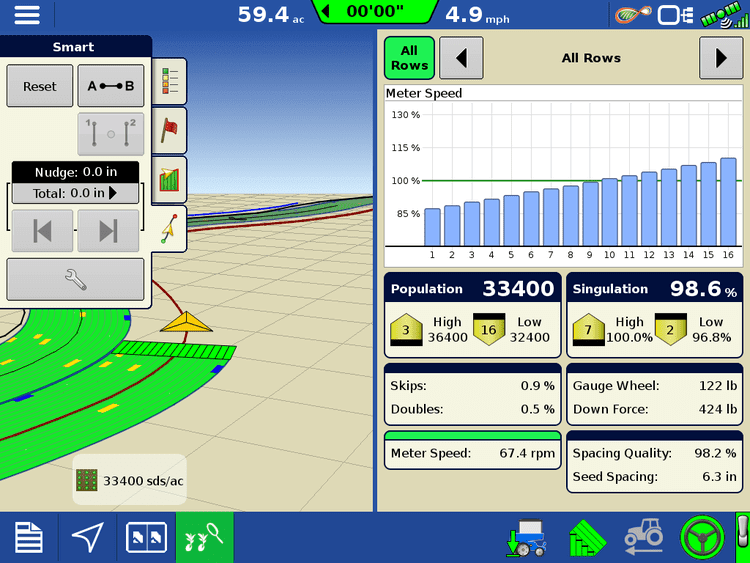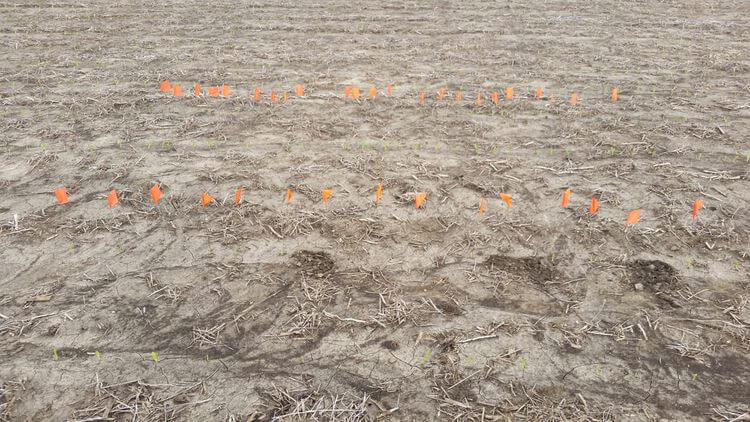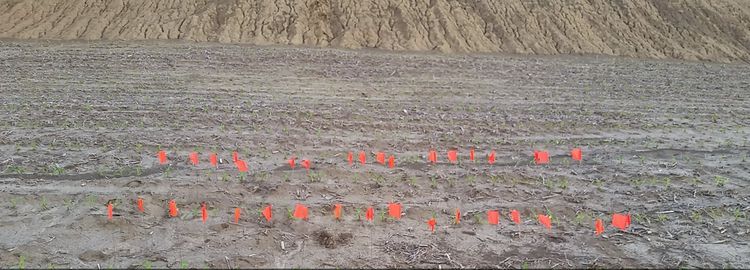SureDrive® reveals the true magnitude of problems caused by twists and turns in a field
Adam Gittins knew that when his planter rounded a curve in his fields, the outside of the implement traveled at a faster speed while the inside moved slower.
“I was aware that the varying speed caused the rate at each row to be off, but I didn’t have a way to adjust for this,” says the Neola, Iowa, farmer.
What he didn’t know was exactly how far off those rates were until he equipped his Kinze 3600 bulk fill 16-row planter with Ag Leader’s SureDrive system.
“I had an opportunity to test the individual row electric drives. I installed the system on my planter about a week before I was planning to go to the field,” he says.
One of the most amazing parts of the SureDrive system, says Gittins, who is also the General Manager at HTS Ag, is its simplicity. “Everything electronic that happens on a row of the planter is handled using a row unit module,” he notes. “This allows for the wiring to be streamlined considerably, which was evidenced by the amount of the cabling and equipment removed from my planter when doing the install.”
Side-by-side comparison
Because Gittins had access to a second Kinze planter (3660 16-row), which was hydraulically driven, he was able to do a side-by-side comparison with the SureDrive system across 750 acres. Both planters have finger pickup meters. “The data revealed that there are three distinct benefits to having electric drives on a planter,” he says.
1. Turn compensation. “This is a much bigger deal than I had originally thought,” Gittins says.
Notice the bar graph below showing the meter speed of each row.
“The SureDrive meter speed was very interesting to watch as I ran the planter this past spring,” he says. “I expected it to have some variance, but it was shocking to see how much difference there was as I rounded a curve in the field. To see that visually on my display in the cab really opened my eyes to how big the problem really was without turn compensation from the SureDrive.”

The real story revealed
As the crop emerged, the reality of just how wide that gap was became even more clear.
“The picture to the immediate right shows the outside row of one pass on a curve (bottom row of flags),” Gittins explains. “The row above it is the inside row of the next pass through the field. The bottom row of flags had a stand count of 27,000. The top row of flags had a stand count of 42,000. The target population on the hydraulic drive was 33,000.”
The picture at the far right is of the same setup, but it was equipped with the SureDrive system. The target population was set to 33,000 when planting, and stand counts on both rows were 33,000.
“Several additional stand counts repeating this setup revealed similar results,” he says. “SureDrive was always within 1,000 seeds of my targeted rate between the two rows. The hydraulic drive, however, had between a 10,000 and 15,000 variance from one row to the next.”
- Fewer moving parts. By installing SureDrive chains, sprockets, and other drive mechanisms that typically are a wear item and require maintenance regularly are no longer a factor because they are removed. “The data from my planter tells an interesting story about mechanical drag, as well,” says Gittins. “I have finger pickup meters, and they ran on the test stand in 2014 right before I planted the crop that year. They have not been run on the test stand since, so the increase in singulation of my planter is purely from eliminating the drive mechanisms and converting to SureDrive.”
He says a 2% to 3% increase in singulation was very common, and 98% to 99% singulation covered most of the seed he planted.

This picture shows the outside row of one pass on a curve (bottom row of flags. The row above it is the inside row of the next pass through the field. The bottom row of flags had a stand count of 27,000. The top row of flags had a stand count of 42,000. The target population on the hydraulic drive was 33,000.

This picture shows the same setup as above, but it was equipped with the SureDrive system. The target population was set to 33,000 when planting, and stand counts on both rows were 33,000.
- Clutches eliminated. “This technology eliminates the need for clutches on the planter, because the drive itself can start and stop very quickly and accurately,” he explains. “Since SureDrive can stop each row individually, there is no longer a need for clutches on a planter, which eliminates some of that expense. Also, with the rapid reaction time of the electric drive, variable-rate prescriptions are right on target with no lag time to get to the right rate.”
Calculating ROI
The preliminary numbers make a compelling case for devoting some dollars to technology like SureDrive, but it can be a hard sell when profit margins are tight.
While Gittins estimates his seed usage will be about the same, he believes spending the money on SureDrive to sharpen his planter’s performance is a sound investment that will help him survive during tough times.
“I only get one chance to plant a crop each year. I feel like that is the most important pass across the field. If I don’t get the crop planted properly and off to a good start, I have already lost some of the yield potential,” he says. “Investing in improvements on my planter has always paid dividends because of that. It makes a lot more sense to me to improve the planter than trade tractors or other equipment, especially when prices are low.” •
















